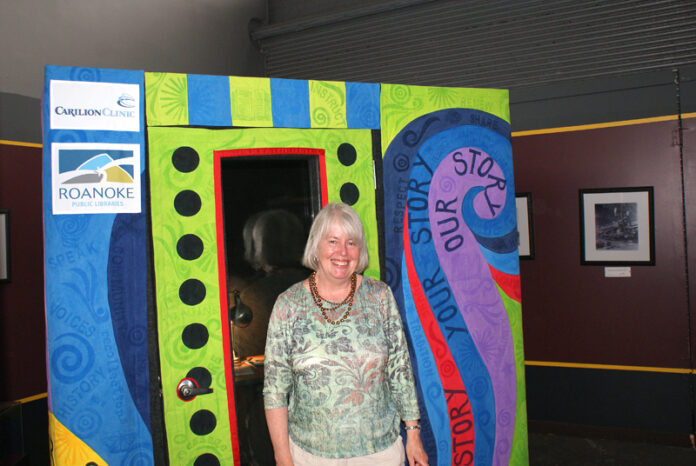
by Gene Marrano
It wasn’t always easy for Norfolk & Western’s earliest black employees – they were often relegated to the toughest jobs in the local railroad repair shops before given the opportunity to move into conductor or engineering positions. But working for the railroad (now Norfolk Southern) was often prestigious, a leg up during times of segregation.
The Virginia Museum celebrated that African-American heritage during a day long event last Saturday, ending with a fundraiser that honored several of the oldest surviving black employees who worked here in Roanoke, the former headquarters for the storied railroad line.
The African-American N&W Heritage Celebration also offered caboose rides on a section of track, a locomotive training simulator and historical displays. The Virginia Museum of Transportation on Salem Avenue features a permanent exhibit honoring the contributions of African-Americans, with pictures of those pioneering employees and their own words about what it meant to them to work for the railroad.
Norfolk Southern archivist Jennifer McDaid traveled from NS headquarters in Norfolk to talk about that experience as well. “I help the company preserve their history, taking care of their records, everything from photographs to [work logs],” said McDaid.
There were often “challenges” for early African-American workers said McDaid, who nonetheless “made a great contribution to the building of the railroad in a great variety of jobs.” Some worked at the former N&W freight station that now houses the museum, others at Shaffer’s Crossing in northwest Roanoke or at the downtown shops in southeast. “They have a variety of experiences,” said McDaid, who enjoyed meeting some of those former employees during her visit.
Photos of an all African-American crew at the Bluefield yard were among the large prints available as part of a silent auction. McDaid is also working with a new group, Rails of Color, a band of Norfolk Southern employees that volunteer as mentors in Roanoke City schools, teaching about that railroad heritage and diversity at Norfolk Southern. A program staged at Jackson Middle School was part of a display at last weekend’s day long celebration.
“NS has put a great emphasis on its history, and also diversity,” added McDaid, “there’s so many stories that come with the history of the railroad.” There is a sense of urgency with many of those stories, since older African-American N&W workers that blazed a trail are passing away.
David Ramey Sr. spent 24-plus years working for N&W, sketching pictures of African-American work crews and everyday railroad life in his spare time. He was selling prints of those sketches at the museum event. “The railroad was good to me,” said Ramey, who is now writing two books – one on railroad life, the other on the legacy of Henry Street. As for his drawings: “God gave me the gift of drawing, so I give him something back.”
Oral histories captured in recent years have helped preserve that legacy; older African-American retirees gather at the museum once a month to tell their tales. “I say ‘cool’ a lot,” said McDaid of those sessions, which she often attends. Hearing those stories “is probably … one of the best parts of my job.”
Despite the early challenges faced by black workers, the stories McDaid hears are often positive and work-related, dealing with days at the Shaffer’s Crossing or on train runs. Archival photos taken over the years by N&W staff photographers, of equipment, employees and the land they traveled through are available for viewing on links at the Virginia Tech website (vt.edu).
Tell your own transportation story: Have a tale about transportation that needs to be told? The Virginia Museum of Transportation wants to hear it, especially if it is aviation-related. Ellen Brown and several interns are manning a recording booth this summer, hoping to capture stories from Roanokers about transportation. Aviation is at the top of the list, with the museum planning to open an aviation gallery in the near future.
Those stories may wind up in print, on a website or in snippets on plaques at the museum. “A lot of those identified [for recording] are 80 to 90 years old, so we want to be sure we get them right away,” said Brown, a public historian who used to work at the Glencoe Museum in Radford.
The museum has borrowed a portable recording booth from Roanoke City, in a format much like NPR’s Story Corps series. Brown’s own website for The Virginia History Exchange features interviews, historical papers and vintage photographs, a model she said for the museum website. Brown also edits the Raleigh Court newsletter monthly.
“It could grow into so much more,” said Brown about the recording series, “what we are doing is laying the foundation.” The stories told don’t have to be about aviation – someone may want to talk about the early days of the railroad, or riding a trolley. Bringing that “social history” to life could be fun added Brown; “it touches every family.”
See vmt.org to contact museum personnel about telling your transportation story.


